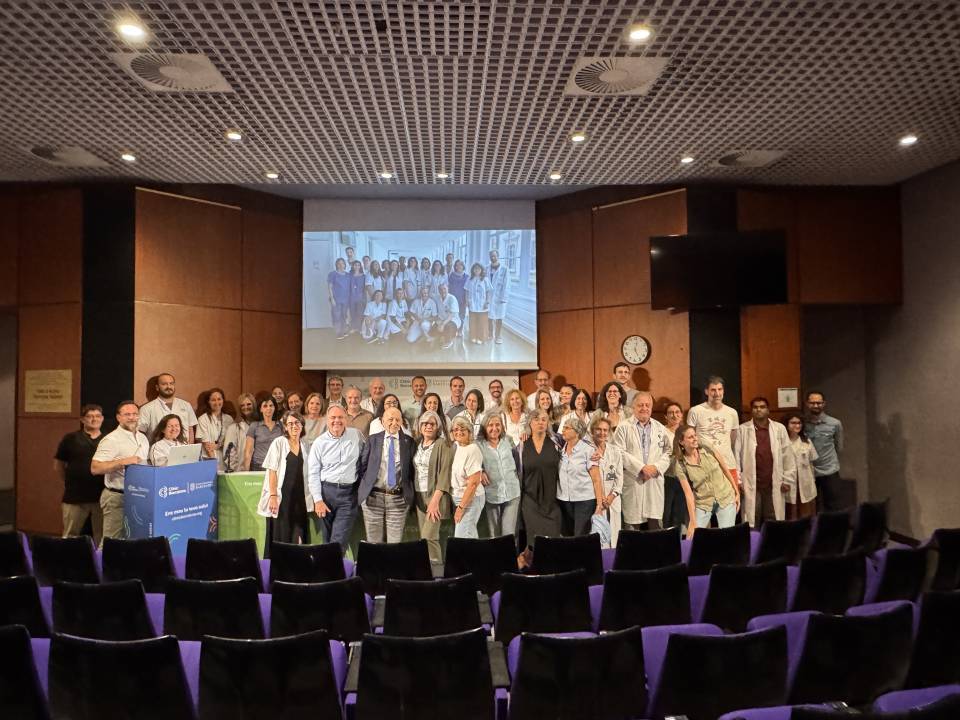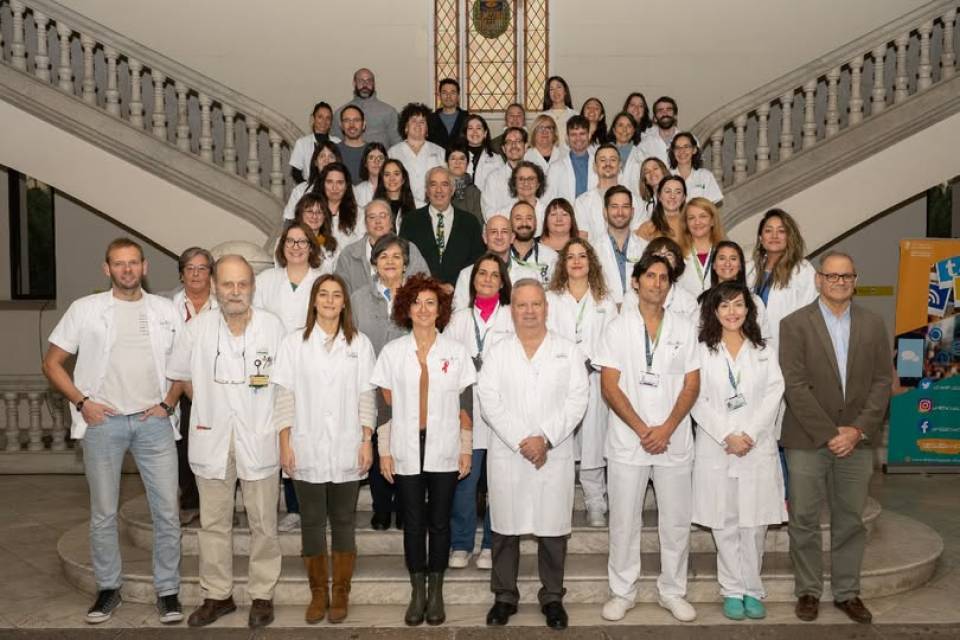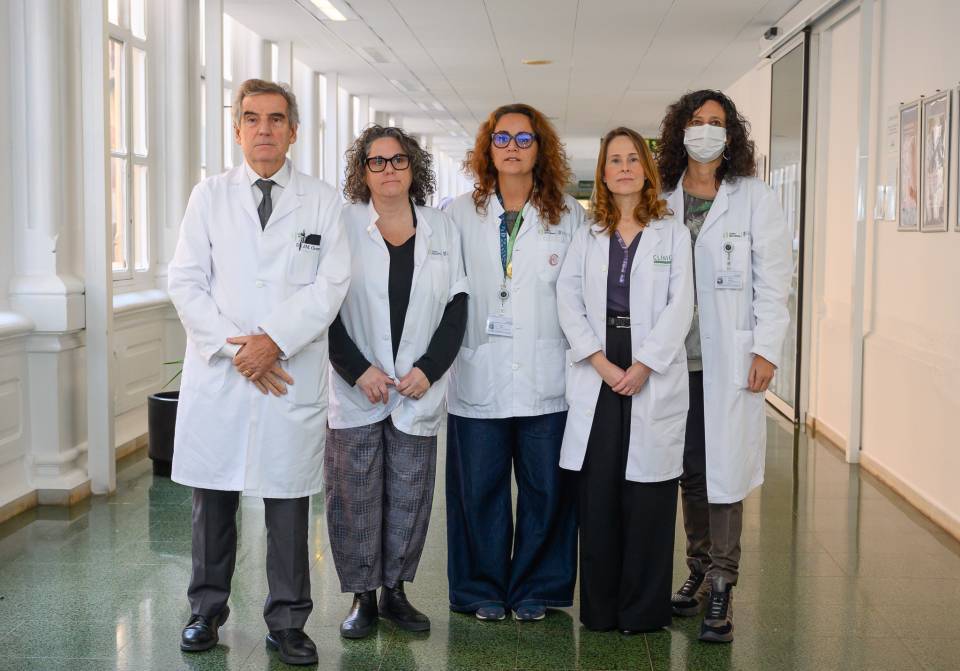This achievement reflects more than 30 years of accumulated experience and leadership in the application and refinement of this intervention, with a trajectory marked by innovation and the training of professionals from around the world.
What is TIPS and what is it used for?
The transjugular intrahepatic portosystemic shunt (TIPS) is a minimally invasive technique that creates an artificial connection within the liver between the portal vein and the hepatic vein. This shunt reduces portal pressure and is mainly used in patients with advanced cirrhosis to control complications such as recurrent esophageal variceal bleeding or refractory ascites (persistent accumulation of fluid in the abdomen). Developed in the 1990s, TIPS has significantly improved the quality of life and survival of patients with severe liver diseases.
Hospital Clínic, a pioneer in the evolution of TIPS
The first TIPS at Hospital Clínic was performed in 1992 and was one of the first in Spain. Since then, the center has been a pioneer in the implementation and improvement of the technique, participating in international studies that have defined indication criteria, technical advances, and follow-up protocols. Doctors Jaume Bosch and Joan Carles García-Pagán, hepatologists and researchers at Clínic-IDIBAPS, have been key figures in this journey, leading research projects and training professionals worldwide. Their work has helped establish Hospital Clínic as one of the hospitals with the most experience and recognition in the management of portal hypertension and its complications.
Among the innovations promoted by the center is the use of covered stents, which have improved the safety and efficacy of the procedure, as well as the incorporation of prognostic models to better select candidates and optimize results.
Commemorative event: past, present, and future of TIPS at Hospital Clínic
To celebrate this milestone, Clínic Barcelona organized a special event to review the past, present, and future of the technique at the center. During the event, experiences and advances achieved over these decades were shared, and the work of the multidisciplinary team involved in TIPS was highlighted. One of the most moving moments was the participation of one of the 1,000 patients treated, who shared firsthand the positive impact of the procedure on his quality of life.




